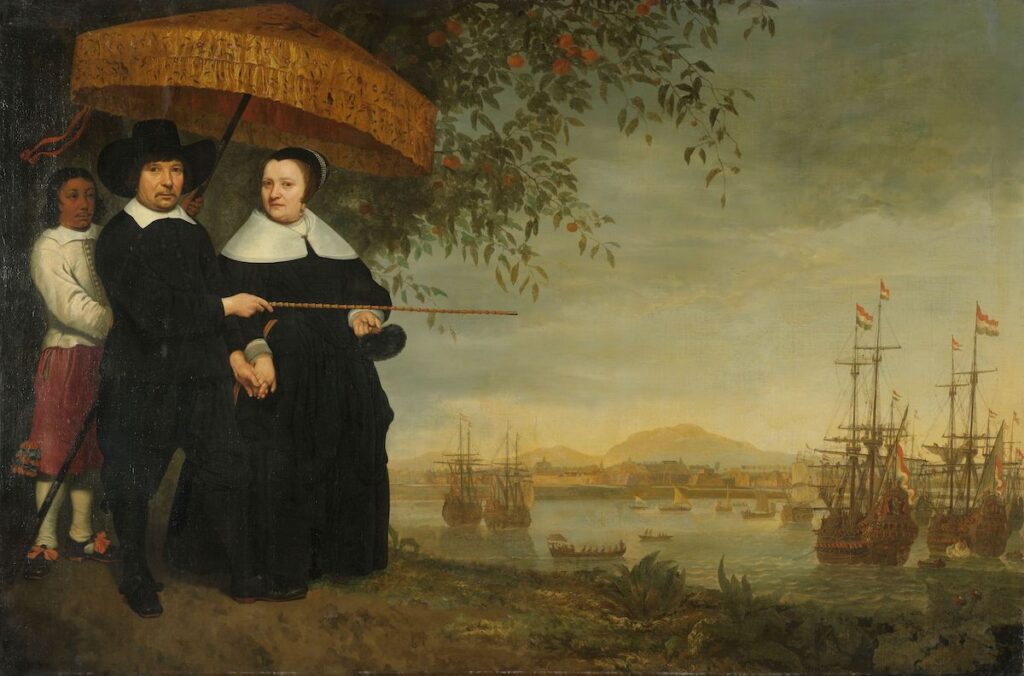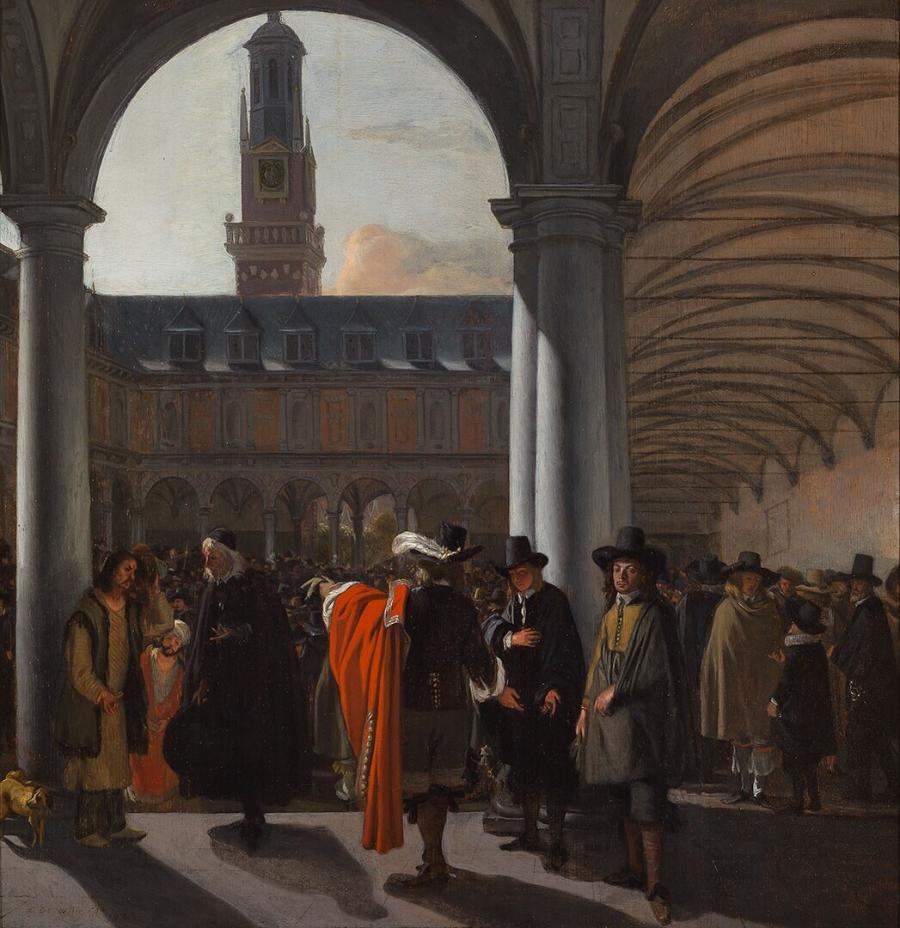About this website
The Dutch East India Company (Verenigde Oost-Indische Compagnie, VOC) was a conglomerate whose operations almost exactly span the 17th and 18th centuries. It is known for trading spices and other Asian commodities in a large area centered around modern-day Jakarta in Indonesia, and shipping these to Europe. The company had a deep and long-lasting impact on the history of Asia, largely in a negative sense: the VOC gained a dominant position in the spice trade by use of force, committed genocide on the Banda Islands, made use of slave labor and also actively traded enslaved people.

Rijksmuseum Amsterdam. License: CC0
The VOC also had a deep and long-lasting impact on the history of finance and capitalism. This impact was arguably of a more positive nature. Shortly after its founding in 1602, it held an ‘initial public offering’ (IPO)—the first of its kind in the history of the world. As the company’s shareholders started to actively trade their shares, they gave rise to the world’s first stock exchange. This website is dedicated to this history. It is created by Dutch economist and historian Lodewijk Petram, who wrote a book about this subject: The World’s First Stock Exchange (New York: Columbia University Press, 2014). The blog posts present various sub-topics: short stories about the Dutch East India Company’s IPO, the locations where the first shares were traded, and the first short. They also treat frequently asked questions: how rich did investors in the first public company get? And was the VOC the most valuable company of all time?

Museum Boijmans van Beuningen, Rotterdam. License CC0.
All comments, questions and suggestions for blog post topics are welcome via the contact form.

